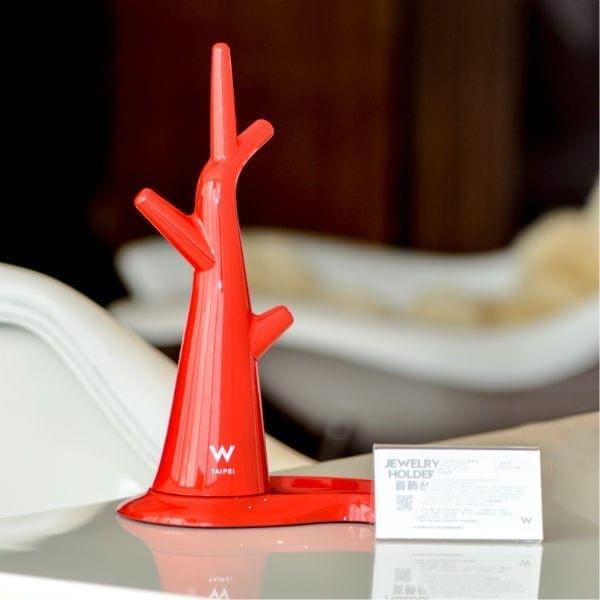 The circular economy (CE) is a systems solution framework that tackles global challenges like climate change, biodiversity loss, waste, and pollution. Circular economy practices are known to be governed by the “3Rs”, namely Reduce, Reuse, and Recycle, which are the major strategies used for promoting the circulation of products and materials, thereby lowering waste and pollution, and aiding to regenerate nature. But in terms of attitude and willingness to buy in, studies show that the classic 3Rs are surprisingly not the most effective strategies for optimal results, especially in the context of hotels and guest perception of the measures.
The circular economy (CE) is a systems solution framework that tackles global challenges like climate change, biodiversity loss, waste, and pollution. Circular economy practices are known to be governed by the “3Rs”, namely Reduce, Reuse, and Recycle, which are the major strategies used for promoting the circulation of products and materials, thereby lowering waste and pollution, and aiding to regenerate nature. But in terms of attitude and willingness to buy in, studies show that the classic 3Rs are surprisingly not the most effective strategies for optimal results, especially in the context of hotels and guest perception of the measures.
Customer perception
Anyone visiting hotels this past decade will have seen the message in the bathroom asking guests to help save resources by putting the towel on the floor only if a new towel is needed. Some clients may perceive this message positively as they will associate the hotel as an eco-friendly company. Some others may have a totally different perception and understand this message as a way for the hotel to reduce costs by cleaning less towels daily, to the detriment of guest comfort. Thus, depending on the client’s perception, the impact on the hotel (brand perception, willingness to stay, willingness to pay, etc.) can be either good or, unexpectedly, bad.
This can happen for any circular economy practice that is primarily put in place to reduce the use of resources like water or energy without implying a change in the production process to truly commit towards a more sustainable world. In other words, some CE practices may imply a rethinking or redesigning process from the company but some others may not. For instance, one way to reduce the use of resources is to clean the room only every other day. Another way is to train the cleaning staff to optimize the use of resources. The former practice does not imply much commitment from the hotel, on the contrary, it is a clear reduction in costs. However, the latter shows a stronger commitment from the hotel as training and supervising the cleaning staff has a cost and an impact on the overall production process. In both cases, the goal is to reduce the use of resources.
However, the client perception of those two practices can be completely different because in one case, the hotel has rethought or redesigned its processes to reduce the use of resources without impacting guests’ comfort, but not in the other case.
Rethink or redesign: the key for successful CE practices
Multiple researchers and experts have claimed that the classic CE practices consisting of reusing, reducing or recycling (“the 3Rs”) are less circular than rethink or redesign practices. Furthermore, the classic 3Rs practices, as argued above and by various other authors, may be perceived as a cost-reduction strategy instead of a commitment towards a cleaner planet. Consequently, this difference in customers’ perception may have an impact on their willingness to pay for a hotel room. Our research precisely aims at answering this question, i.e. do CE practices with a rethink or redesign approach impact more positively on the clients’ willingness to pay a premium price than the so-called classic 3R practices?
To answer that question, we have used three CE practices (carefully selected among many CE practices by conducting several preliminary studies) dealing with three different issues: water consumption, energy consumption and CO2 emissions. For each of the three practices, we have selected a classic 3Rs version and a rethink or redesign version. To showcase the CE practices, we have created a fictitious hotel website and then surveyed several hundred hotel consumers to answer a set of questions based on the fictitious website page.
The results are clear: rethink or redesign practices do impact willingness to pay positively, while the classic 3Rs practices have no impact. More specifically, when compared to a hotel without CE practices, the implementation of rethink or redesign CE practices significantly increases guests’ willingness to pay, whereas the implementation of classic 3Rs CE practices does not change guests’ willingness to pay significantly more.
The graphic below shows the average answer (on a scale from 1 to 7) to the question “Are you willing to pay a higher price than for other hotels of the same category?” The sample size was 706.

Attitude towards the practice
Of course, the next question to answer is: why such a result? We would like to answer that question with a simple example. Assume you have been informed that an extremely rich person has donated 1’000 USD. What is your attitude towards that person? Now assume that this same person was actually not rich at all, on the contrary, the 1’000 USD were his/her yearly savings. Is your attitude towards the person the same? If not, it is probably because you sense a difference in the commitment that this donation represents, depending on the financial situation of the person, despite the fact that the person is the same. Well, we believe that for hotels it is exactly the same phenomenon. When redesign or rethink practices are put in place, the attitude of the guest is affected more than with classic 3Rs practices, which in turn affects the willingness to pay. In statistical terms, we predict that attitude towards the hotel mediates the effect of CE practices on willingness to pay a price premium.
Our study results indeed provide clear evidence that attitude mediates the relationship between the type of CE practices implemented by a hotel and guests’ willingness to pay. This observation is in line with the well-established theory of planned behavior and the existing literature pointing out the fact that touristic sustainable consumption is influenced by the attitude towards a product or service.
At this point, one may wonder what makes a CE practice perceived as a strong commitment by the clients? Well, that is without a doubt the million-dollar question. Our above-described results partially answer the question by distinguishing rethink or redesign practices from the “classic” ones. Of course, the distinction between rethink or redesign practices and classic 3Rs is not so obvious. With our research, we contribute to the ongoing debate about the distinction between CE practices, but more research on this topic is needed. If hoteliers knew better which kind of practices have the best economic impact, this would for sure accelerate the slow movement towards circular economy we can all observe around us.
Careful communication
As researchers, we have learned a lot in the past two years. By conducting many different studies with hotel guests, interviewing experts, academicians and general managers, we have realized that CE practices not only have to be carefully selected to ensure a positive impact on the economic situation of the company, but they also need to be carefully communicated. First and foremost, as per our results shared above, practices that imply a strong commitment from the company should be communicated as such. Clients must feel the honest implication of the company as much as possible. This implies de facto that communicating about classic CE practices can have little or no impact.
Furthermore, worryingly, we sometimes found that communicating about a CE practice has a negative impact. Indeed, in one of our studies, a CE practice was the use of grey water for garden and toilets. The attitude towards this specific hotel with this CE practice was negatively impacted. Of course, this finding may be an isolated case, especially since the study was conducted in the midst of COVID-19, but we firmly believe that further research on CE practices and communication should be conducted to avoid undesired impacts of a specific communication.
Does the hotel segment play a role?
Unarguably, clients of a 5-star hotel and 3-star hotel have different expectations and different profiles. So, does this affect our findings? On one hand, one could argue that 5-star hotels are luxurious establishments and, even if CE practices are put in place, the WTP won’t be affected. On the other hand, one could say that no matter the price of the room, a CE practice is perceived as an add-on and therefore may lead to a higher WTP. Our results support the fact that the impact on WTP is bigger and more significant for 3-star hotels. One of the possible explanations is the so-called “sustainability liability” effect where clients perceive a circular or sustainable service as less performant.
“There is no planet B”, this is a fact. Consumption habits and patterns are changing, and production processes have to adapt. Our research aims at helping hoteliers have a smoother journey towards the circular economy by better understanding which practices are the best. Nowadays, CE practices are a way to differentiate, and as shown, even to make more profits. In the near future, we believe that CE practices will not be used to differentiate from competitors anymore but simply to stay in the norm. The sooner the implementation, the better.



















